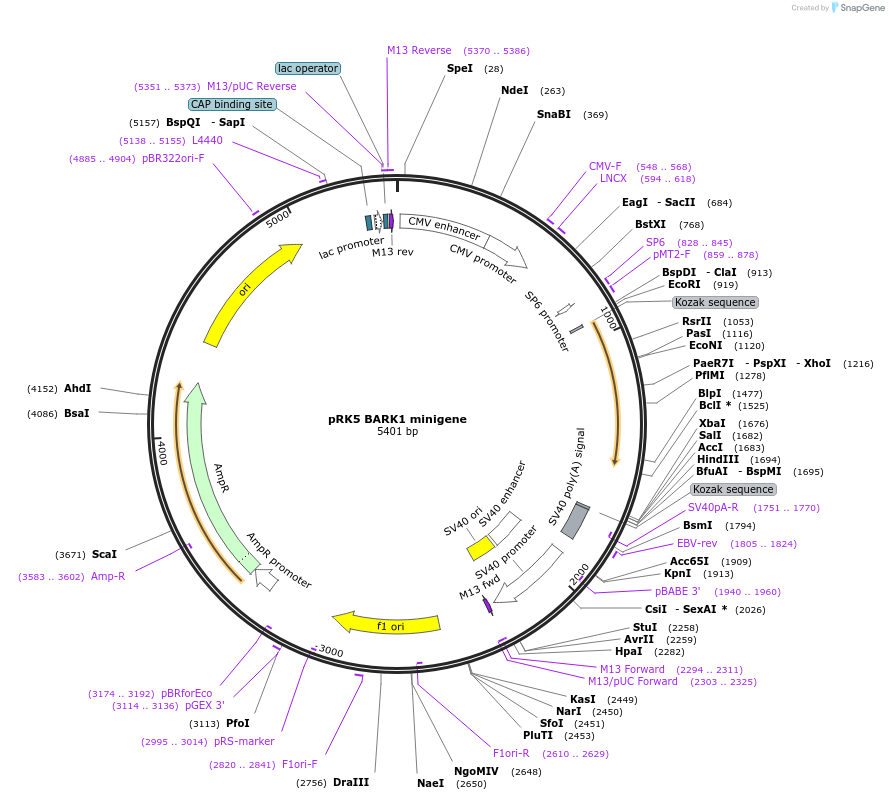-
Depositing Lab
-
Publication
-
Sequence Information
Ordering
| Item | Catalog # | Description | Quantity | Price (USD) | |
|---|---|---|---|---|---|
| Plasmid | 14695 | Standard format: Plasmid sent in bacteria as agar stab | 1 | $89 | |
Backbone
-
Vector backbonepRK5
- Backbone size w/o insert (bp) 4700
-
Vector typeMammalian Expression
Growth in Bacteria
-
Bacterial Resistance(s)Ampicillin, 100 μg/mL
-
Growth Temperature37°C
-
Growth Strain(s)DH5alpha
-
Copy numberHigh Copy
Gene/Insert
-
Gene/Insert nameBARK1 minigene
-
Alt namebeta ARK1
-
Alt namebeta adrenergic receptor kinase
-
Alt nameADRBK1
-
SpeciesB. taurus (bovine)
-
MutationBARK1 amino acids 495-689
-
Entrez GeneGRK2 (a.k.a. ADRBK1)
-
Tag
/ Fusion Protein
- 3'UTR of human b-globin (C terminal on insert)
Cloning Information
- Cloning method Restriction Enzyme
- 5′ cloning site EcoRI (not destroyed)
- 3′ cloning site XbaI (not destroyed)
- 5′ sequencing primer Sp6
- (Common Sequencing Primers)
Resource Information
-
Articles Citing this Plasmid
Terms and Licenses
-
Academic/Nonprofit Terms
-
Industry Terms
- Not Available to Industry
Trademarks:
- Zeocin® is an InvivoGen trademark.
Depositor Comments
The cDNA encoding bovine BARK1 residues Gly495 to Leu689 was amplified using PCR to construct a minigene casette with newly engineered 5' and 3' ends (see Author's map). The 5' end contained an EcoRI site for subcloning, followed by the kozak sequence 5'-GCCGCCACCATGG-3'. A bclI site was inserted at the 3' end immediately following the stop codon. The final BARK1 minigene construct contains the 3'UTR of the human beta-globin gene and a polyadenylation signal.
These plasmids were created by your colleagues. Please acknowledge the Principal Investigator, cite the article in which the plasmids were described, and include Addgene in the Materials and Methods of your future publications.
-
For your Materials & Methods section:
pRK5 BARK1 minigene was a gift from Robert Lefkowitz (Addgene plasmid # 14695 ; http://n2t.net/addgene:14695 ; RRID:Addgene_14695) -
For your References section:
Cellular expression of the carboxyl terminus of a G protein-coupled receptor kinase attenuates G beta gamma-mediated signaling. Koch WJ, Hawes BE, Inglese J, Luttrell LM, Lefkowitz RJ. J Biol Chem. 1994 Feb 25. 269(8):6193-7. PubMed 8119963







